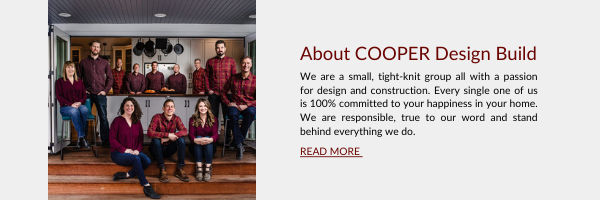A basement renovation can take any number of forms, from the relatively minor framing of a couple of walls for a spare bedroom to a full-on remake of the lower level of the home for luxury living and entertainment space. Because of the multitude of options a basement can provide, the cost of a basement remodel in Portland will vary greatly. Below, we've compiled average figures based on our experiences, and figures from Remodeling magazine’s Cost vs. Value Report.
Preparing for a Basement Remodel
All major renovation jobs require significant advance planning, and a remodel of the basement in your Portland home is no different. As you prepare for this major undertaking, you first should find a focus for your basement remodel. Do you want more bedrooms and bathrooms for your family and for visitors, do the kids need room to play, are you hoping to add craft, workshop, and office space? Prioritizing your needs will lend clarity to your plan. Here are some important factors to keep in mind as you plan your Portland basement remodel.
Who Is it For?
Your impulse to remodel your basement might be driven by your family’s need for space, or by a desire to add value to your home for a resale in the near future, or by a plan to create an accessory dwelling unit that you can rent out for additional income. Each motivation carries with it different approaches to the remodel.
Let’s assume we’re talking about a major conversion of the lowest level of your home, not just the spiffing up of the space. The possibilities are almost endless and could include any combination of:
- Bedrooms and bathrooms for your growing family
- Guest suite for visiting family and friends
- Playroom for the kids, little or big
- Man cave for the biggest kids
- Craft room
- Exercise room
- Home office
- Laundry room
- Family room
- Home theater
- Bar
If the project would be for your immediate use, you don’t need to be as concerned about the payback when you sell the home; you’re making it more valuable for your family right now. But if you expect to put your house on the market in the near future and want to spend your money wisely, it’s important to do some research into the types of renovations that increase the resale value of your home.
As your basement ideas take shape in your mind, write them down. Keep a list, tear out pages of magazines, bookmark websites, and stash examples in a Houzz Ideabook online. It’s OK to dream now; when you start counting the costs, you can decide which ideas you can afford and which ones you’ll have to let go of.
How Much Does a Basement Remodel Cost in Portland?
Before you talk to a builder and get price estimates, it’s important to do some soul-searching and decide how much you want to dip into savings, how much equity you can borrow against, what kind of loan payments you can handle, and whether you’ll be able to recover the cost of the remodel when you sell your home.
The specified basement remodel featured here imagines a 20-by-30-foot entertaining area with a wet bar and a 5-by-8-foot bathroom.
The project also includes 24 feet of wall to enclose the basement’s mechanical equipment—the water heater and furnace. The walls and ceilings would be painted drywall, and the exterior walls would be insulated. The cost includes five factory-painted six-panel hardboard doors and painted trim.
The main room would have 15 recessed light fixtures in the ceiling and three surface-mounted lights. The floor would be a snap-together laminate system. The bar would feature 10 linear feet of raised-panel oak cabinets with laminate countertops and an under-counter refrigerator, a stainless-steel bar sink with single-lever bar faucet, and vinyl floor tile. The bathroom would be equipped with a standard white toilet, a vanity with a cultured-marble top, a two-piece fiberglass shower unit, vinyl flooring, a light with exhaust fan, a light fixture over the vanity, and a recessed medicine cabinet
In Portland, one can expect to invest between $75,000 and $130,000+ on their basement renovation, depending on the materials selected, existing structure, and amenities. If you’re considering the construction of an accessory dwelling unit (ADU), you can expect to invest somewhere between $75,000 - $250,000 depending on your existing structure, the modifications needed, and the cost of materials. Click here for more information on building an ADU in Portland.
Basement Fundamentals and Factors to Consider
Think about basement-specific issues that will affect how you proceed. Battling moisture in a basement is a given: Think sealants, insulation, and sump pumps. Ceiling heights can be tricky, and the city of Portland has rules requiring a height of 6 feet, 8 inches in most places. If your ceiling is too low, you might have to dig out the floor to gain more height. Below are a few of the major factors to consider when embarking on a basement remodel.
#1. Let it the Light
Think about ways to bring in natural light through new or enlarged windows and plentiful light fixtures. Using warm paint colors can add the feel of sunlight to an underground space. Tricks such as recessed light fixtures into the ceiling can help make up for the lack of height. Speaking of light, basements need it, and your plan must maximize natural light sources, incorporate sufficient fixtures to avoid the cave feeling, and use color to enhance the light. Finally, know that you’ll need to provide egress windows or doors for safety.
#2. Stand up Straight
Be sure your ceilings are high enough. Your ceiling must be 6 feet, 8 inches high, with certain exceptions. Assuming your remodel is a major project, you might consider raising your ceiling by lowering the floor — digging your basement deeper.
#3. Minimize Moisture & Get Comfy
If you live in a flood hazard area, the city might not even allow you to remodel your basement. But if you’re clear on that score, you’ll still need to make sure the design of your project takes into account the moisture that comes with basements. Make sure your builder incorporates the proper precautions, including insulation, ventilation, moisture barriers, drains, and sump pumps. Pro tip: a good contractor will typically provide a warranty against flood damage. Your designer will also have experience dealing with retrofitting a basement with heating, ventilation, and air conditioning. Keep in mind, as you lay out the rooms, that it’s better to put beds against interior walls because exterior walls can be colder, even with insulation.
#4. Health and Safety
As you work with your design professional, be sure to talk about radon and earthquakes. It’s a lot easier to install radon mitigation measures and to bolt your house to its foundation when your basement is pulled apart. While we’re on the topic of health and safety-- it’s imperative that your basement renovation has appropriate windows/doors to comply with fire safety standards. To be considered living space, your basement needs at least one egress window or door through which people could escape in the event of an emergency. Portland’s city code details the dimensions of such a window or door.
Who Will Do the Work?
Here’s another important bit of homework to do. The selection of the designer and contractor will be your most important decision. Talk to people who are happy with the companies that did major renovations at their homes and read online reviews. Call your top prospects; ask if they can take on a project such as yours, if they can provide references, and if they will allow you to visit a worksite. Make sure they have the right licenses and insurance. Call the references they provide and visit the Better Business Bureau website to check for complaints. Then select a few and set up in-person meetings. Click here for more information on the home remodeling process, including how to interview a contractor, what to look for in remodeling bids, and more.
Then it will be time to share your vision with your architect, designer, contractor, or design-build company. Be honest from the start about your budget. Talk about how you envision using your “new” basement and how you want to feel when you’re in it. When you sit down with your designer, have at the ready the examples of what you’re talking about — the clippings, photographs, and Houzz Ideabook images. Pull out a pencil and paper and sketch what you have in mind, if necessary. Your contractor will give you cost estimates, and it will be time to make those hard choices about what you can and can’t afford. A contract will follow, and then the work can begin.











